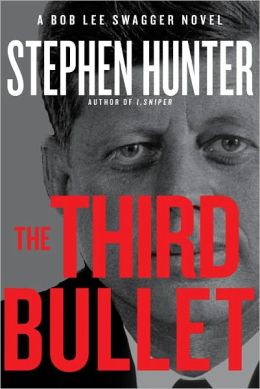This book is a real disappointment.
BOTTOM
LINE: A book that mocks the subject
matter and makes fun of the subject matter’s devotees is a stupid idea and
depressing to contemplate.
From the
title, which is hipster-speak for “ooh, secret dangerous stuff about to be
revealed!” -- it isn’t; to the last pages, wherein we learn that the book only
has a bibliography, not endnotes; it’s sad to see so much obvious effort
expended for just another uninspired and, in fact, mocking, tale of Superman’s
history.
A big
downside is the smarmy. snarky tone taken by Weldon, which may or may not be a
job requirement for his NPR gig.
Surprisingly,
there are only a handful of actual errors in this book:
·
Page 45 - composer Sammy Timberg’s name is given
as Timber (lumberjacks rejoice!)
·
Page 99 - we have a case where an opening
bracket “[“ is closed by a parenthesis “)” instead of a second bracket
·
Page 100-101 - in the retelling of how Superman
and Batman learned each other’s identities in Superman #76, Weldon says
“a bright light” is what lit up the darkened stateroom, when in the story the light
comes from rising flames from a fire that they are changing to battle
·
Page 105 - Jimmy Olsen’s stretchable alter-ego,
Elastic Lad, has NEVER had the word “The” on the front of his shirt
·
Page 121 - Superman’s lost Kryptonian love, Lyla
Lerrol, has her last name misspelled
“Lerroll” on this page but it’s spelled correctly elsewhere
·
Page 125 - in his narration of the Superman Red/Superman
Blue story in Superman #162, Weldon mistakenly says that the resulting twin
Supermen have outfits that are all-blue and all-red, when in the story the
yellow parts of their costumes stayed yellow
·
Page 142 - How can you say “Elliott S. Maggin”
when everybody knows it is “Elliott S! Maggin” (with an exclamation point)?
·
Page 165 - Amalak the space pirate is called a
“low-rent villain” when in fact he appeared seven times, almost killing
Superman several times; Amalak believes his home planet was destroyed by
Kryptonians
·
Page 178 - Is it Plexiglas or Plexiglass?
·
Page 264 - The TV programming block was called
“Kids WB,” not “WB Kids”
·
Page 289 - What Superman eats is not “beef
burgundy with ketchup” but SPECIFICALLY “beef bourguignon with ketchup” - this is
important because this specific phrasing has even been a life-or-death (!)
secret code between Lois and Superman
·
Page 304 - In Superman Returns, Lois
DOES NOT have “conversations with her husband” - especially since in the
previous paragraph Weldon tells us that Lois is “engaged” not married
One way in
the book is accurate is in its explanation as to why Superman Returns was
flawed from the start. Aside from its
disturbing depiction of Superman as a creepy Super-Stalker (let’s X-ray vision
my ex-girlfriend’s life and use Super-hearing to eavesdrop on her!), the
Superman we knew and loved would never put himself first and run away from the
people that need him.
Another
disappointing aspect of this book is the paucity of its index. For example, Sammy Timberg’s musical theme is
mentioned several times, since it appeared in the Fleischer shorts and on the
radio shows. But the composer isn’t
listed, even by the way his name is misspelled in the text. A slightly bigger name, President John
Kennedy, is also missing.
So, in
summary, this is an unnecessary telling of Superman’s story with nothing really
new and a disturbing snarky hipster tone.
If you are going to put this amount of effort into a book, why
condescend and make fun of the stuff?
One disturbing example is that after his summary of “The Superman
Super-Spectacular,” after JFK stood in for Clark Kent, Weldon takes a dump on
our childhood by saying, “1964, ladies and gentlemen.”
I wish I
had NOT spent the money to buy this
book.
I can’t wait
for the day that the “ironic” mindset becomes outmoded.










































